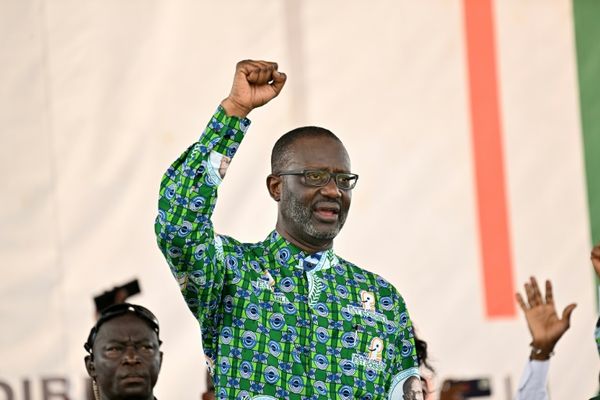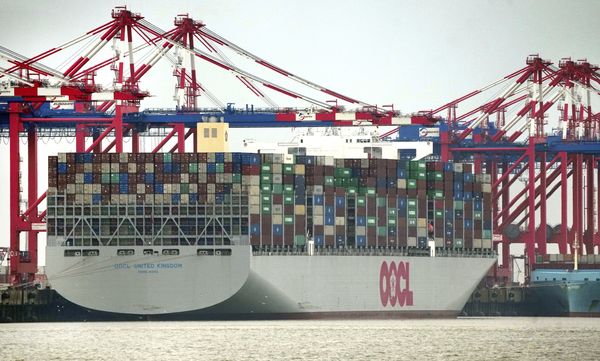
There is a saying, "When the US economy sneezes, the emerging markets get a cold." The global economy now may be more complex: it is more resilient in terms of where new economic growth emerges, but more vulnerable in terms of risk emanating from the United States, but also in China, and in sites of conflict and geopolitical competition.
Inflation is the immediate risk, but the outlook for shared global growth looks more uneven as the traditional drivers of innovation and investment from the West now face a prolonged demographic decline, coupled with rising nationalist sentiment, and protectionist trade and industrial policies.
The Covid-19 pandemic, Russia waging war in Europe, and a distrust of China's economic model all influence Western strategic assessments, but the trendline of growth and productivity decline has been building for some time. In the rich world, between 1980 and 2000, GDP per capita grew annually on average about 2.25%, but in the last twenty years that growth has halved.
Challenges in the Arab region
For the Arab region, 2023 will bring a set of new challenges to balance the opportunity of high resource revenues with more structural inflationary pressures and a widening gap between energy importers and exporters. The upside is that now is a tremendous moment of opportunity for some Arab states to take leadership roles in regional and global investment to accelerate new technologies to solve some of our most pressing energy needs.
For investors, the war in Ukraine will continue to have repercussions in the global economy, whether in energy flows or food supplies. Tensions between the US and China add potential risk escalation scenarios, as well as the failure of the Iran deal negotiations and the new reality of a nuclear arms race in the Middle East. For the United States, its Middle East policy will have to change, necessitating a new kind of economic and security engagement across the Arab region.
In markets, what happens in the US and the decisions of the Federal Reserve's Open Market Committee will continue to influence global costs of borrowing.
For Arab economies with currencies tied to the US dollar, the strength of the US dollar combined with higher interest rates creates some challenges to domestic bank liquidity. For weaker Arab economies, debt sustainability will be a pressing challenge to governments and will change their relations with international financial institutions, as well as with their Gulf neighbors willing to provide central bank deposits, currency swaps, and commitments of foreign direct investment.
Oil and the markets
The economic health of the Arab region remains connected to the whims of global commodity markets, especially oil and gas. We don't really know the depth of the global economic slowdown ahead, or its impact on energy demand in 2023.
For oil, how quickly and with what urgency can demand recover in China? The good news is that oil prices remain, for now, at levels in excess of Gulf Cooperation Council (GCC) fiscal and breakeven levels. Fiscal policy has been more constrained than in previous windfalls, and new efforts at tax collection and the growth of tourism and service sector activity in the GCC is cushioning the possibility of a crash on the other side of this oil market swing.
Perhaps more important though is the shift in external GCC assets; the breadth and scope of Gulf investment has never been more transformational in the global economy. One estimate by a leading investment bank sees an upside scenario where Brent oil prices rise steadily over the next three years to $120/bbl, GCC external assets could reach a value of $6 trillion. But even with a scenario of much lower oil prices, to levels of $40/bbl, the GCC asset value flattens at a very significant level of just about $5 trillion. That's not exactly a crash in influence in a downside scenario.
Global oil production is shifting as well, as the cost curve for financial and regulatory constraints changes. This creates an advantage for dominant Gulf producers willing to invest in production. It also makes their politics more complex with members of OPEC+ and the largest global oil producer, the United States. At the same time, the outlook for global natural gas demand has drawn Arab producers from North Africa, the Levant and the Gulf closer to Europe.
Energy costs
For the Arab region, inflation and high energy costs add to broader challenges to human development, as a recent UNDP report assesses a real backtracking in development indicators. Trust in how governments can respond to external economic challenges, whether originating from a pandemic or a global recession combined with inflationary pressure, remains low and deteriorating in the region.
A recent Arab Barometer survey found that only 30 percent of respondents reported having a great deal of trust in their governments as responsive to the needs of its citizens. There are some limited exceptions, however. An Edelman Trust Barometer found two countries from the Arab region - Saudi Arabia and the United Arab Emirates - among seven countries of the 27 surveyed, with high levels of public trust.
Trust will be an imperative in 2023 across Arab states as governments deal with a mounting set of risk scenarios and economic challenges. In two states, Egypt and Lebanon, we see the extent of the trust deficit, from monetary policy to lagging reform efforts to general government disfunction.
Egypt and Lebanon
In Egypt, an IMF agreement on a $3 billion, 46 month extended fund facility will require more exchange rate flexibility from the central bank and the government to more actively limit its ownership within the economy, making room for more private sector gains. With that agreement, comes more Gulf support, which has also included opportunistic purchases of publicly listed companies.
For Egypt, any efforts to float the currency and more actively engage foreign investors on a level playing field with the state will also require management efforts at factors outside of the state's control, such as tourism from abroad (especially Russia), energy prices and remittances. Debt management, of course, will be an ongoing stress and will not be solved by this one IMF agreement.
For Lebanon, March 2023 will mark three years since its default on external debt. There is little confidence from citizens or creditors on the state's ability to slow its demise. Economic activity has shrunk by half, inflation rose to an average of 200% over the past year, and the value of the currency has declined 95% of its value against the USD. Poverty has doubled to 82% of the population between 2019 and 2021.
A deal to begin exploration and production of natural gas under the sea between Israel and Lebanon marked a bright spot in the ability of Lebanon to earn foreign currency from future exports, and to see some possibility of tension management among its political factions. Trust in the longevity of that agreement will also depend on factors outside of Lebanon's control, including the policies of a new government in Israel.
High interest rates
In 2023, the threat of a global economic recession coupled with high interest rates will widen the gap of the "haves and have nots" within the Arab region. But more importantly, governments will be tested on their management of external risk and their ability to communicate to citizens and their regional partners what path they choose.
No longer is the region's economy affected by just what happens in the US or its monetary policy. Geopolitical risk, stagflation and a longer-term demographic shift in the West will combine with an emerging set of opportunities for Gulf state investors and regional economies.
*Karen E. Young, PhD is a Senior Research Scholar at Columbia University in the Center on Global Energy Policy. She is the author of “The Economic Statecraft of the Gulf Arab States”, available in January 2023.










